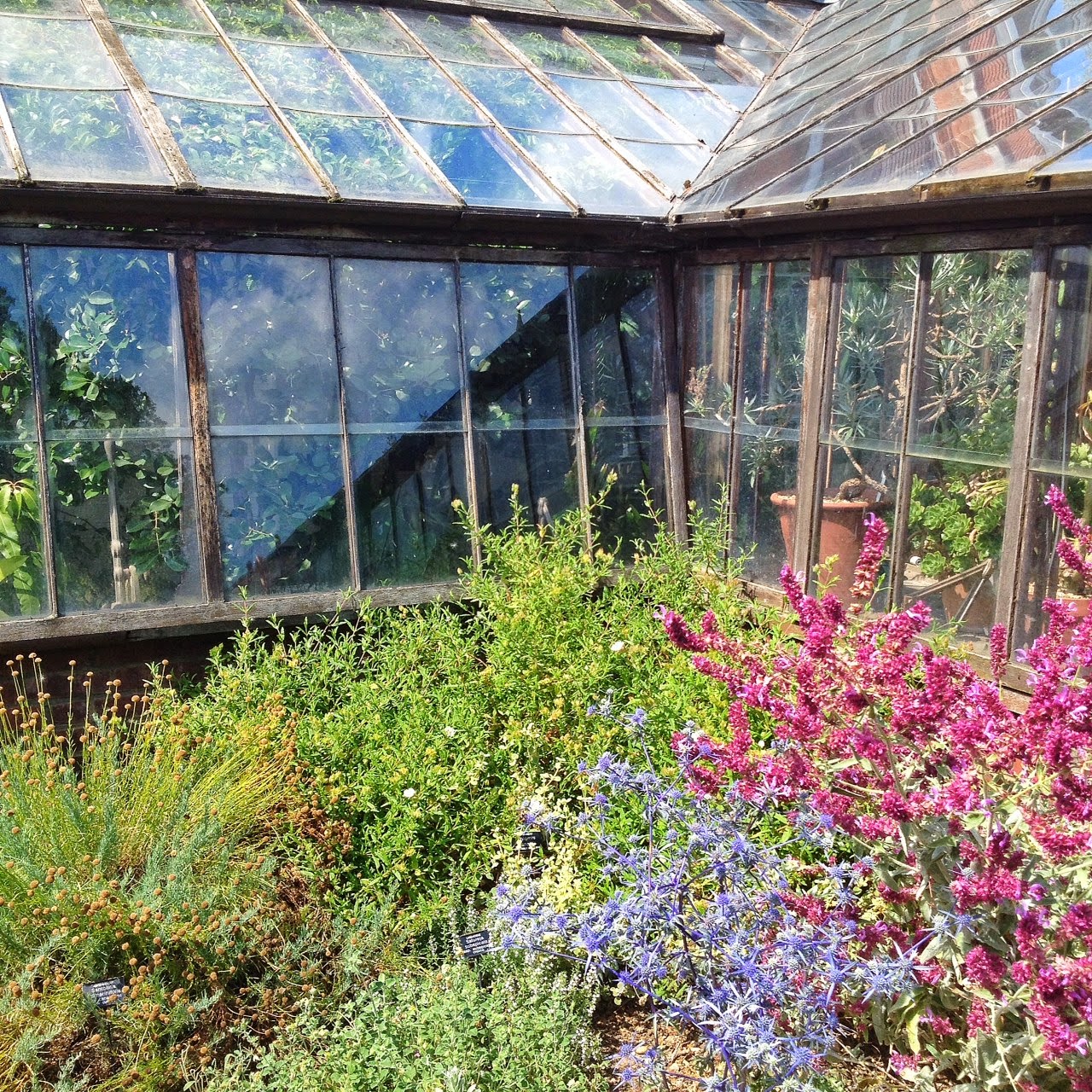The Tropical Corridor covers the north area of the garden. A series of hothouses are filled with exotic and more familiar species - one is rammed to the rafters with Pelargoniums. Unfortunately a large portion of this area was closed to the public during my visit - they had been recently sprayed (happily, with Pyrethrum - an organic insecticide). I had a few tantalising glimpses through the glass at some of the wonders within, and plan to return soon to explore more properly. An all time favourite of mine is Agapanthus, whose sky blue blooms appear throughout this area. Gorgeous.
Not strictly an indoor zone, but on the same general theme is this theatre of Chillies. Traditionally used to display Auriculas at the height of their Spring glory, these garden 'theatres' work well with other small potted plants, and Chillies look wonderful in this one. It's fascinating to see so many together and compare not just the multicoloured fruits but the varied structures and leaves.
The Fernery at Chelsea is the first I've ever seen. The white walls and black floor provide a perfect foil to the deep pure greens of the ferns. It's a tranquil spot tucked away against the western wall of the garden. The greenhouse is simply planted with ferns of many types and sizes, with sunken rocks jutting and patches of moss sprawling through the beds. Shady and cool, it is protected to one side by an adjoining building, with window nets blocking the glare of the sun.
There's something a bit special about the shape of ferns. The elegant bend of the lilting fronds, the violin scrolls as they unfurl, the airy lightness of the small, perfectly arranged leaves diminishing to a fishbone point. Apparently there is a word for the fern-obsessed: 'Pteridomaniac'. Good to know.
Much as I love colour, and colourful plants, the total and utter greenness of the Fernery is just beautiful. From the dark foresty greens of the mosses, to the pale spring hues of the delicate Maidenhair ferns. Chunks of wood hung on the wall host more specimens, and lend a slightly surreal sense to the space. Botanical hunting trophies of days gone by.
The snaky stripes of Horsetail rear high in a far corner of the greenhouse. They encompass a range of shades - from near black, to bright lime and a practically fluorescent yellow. These strong smooth stems, with their bamboo style joints, do not actually belong to the Fern family, but are the last remaining genus of the vascular family Equisetaceae, which were prolific in the forests of the Paleozoic era, over 500 million years ago. Living fossils!
The Wardian case, nestled at one end of the Fernery, creates an enclosed atmosphere to provide a constant high humidity. The filmy ferns within have fronds just one cell thick, and are naturally found near waterfalls. The case was designed to aid transportation of delicate plants, previously at risk from exposure on long journeys across the seas. It was designed by the fern-loving Dr. Ward, who wrote the imaginatively titled book 'On the Growth of Plants in Closely Glazed Cases.' The mist and blurriness of the case did not lend itself to photographing, but you get the general idea.
The final indoor area at Chelsea is a small glasshouse attached to the main building, housing an incredible collection of Cacti and Succulents, and a tabletop display of carnivorous plants that is like a little prehistoric world all of its own.
The glasshouse really is a tiny space, but might just have be the highest plant to space ratio of the whole garden - look at them crammed in there!
I find the graphic shapes of cacti and succulents very appealing. The geometric precision of forms and Fibonacci-esque patterns are just mindblowing. There's also something very humble and friendly about them - they're stunning but they don't shout about it. If I could pick up that little greenhouse and take it home, I would.
Chelsea Physic Garden is situated on the northern bank of the Thames at Chelsea, and can be accessed from Swan Walk, to the East. The nearest tube is Sloane Square. At the time of my visit, the entrance fee was £9.90. The Garden is run as an independent charity.


















No comments:
Post a Comment